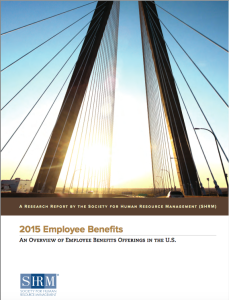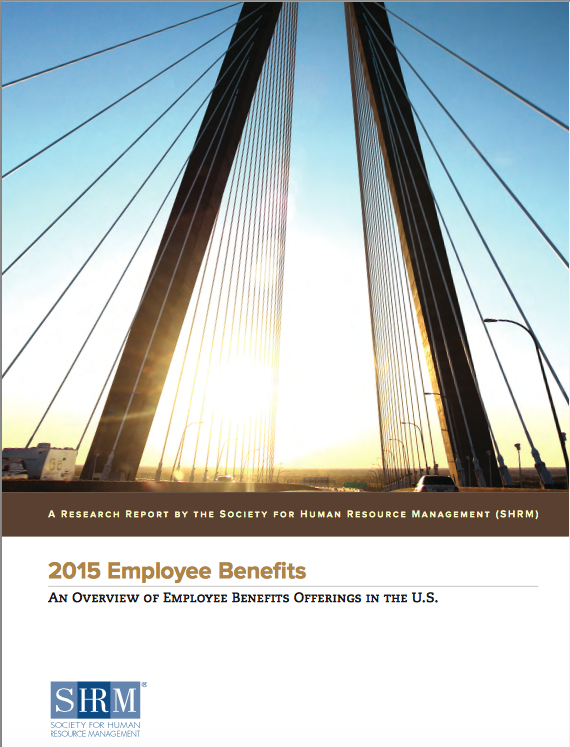Transparency is extremely important to us, so we are letting you know that we may receive a commission on some of links you click on from this page. See our disclaimer.
 The Society for Human Resource Management — known to all as SHRM — released its 2015 Employee Benefits report: “An Overview of Employee Benefits Offerings in the U.S.” And not surprisingly, workplace wellness programs feature prominently.
The Society for Human Resource Management — known to all as SHRM — released its 2015 Employee Benefits report: “An Overview of Employee Benefits Offerings in the U.S.” And not surprisingly, workplace wellness programs feature prominently.
The report states: “One of the key strategies many employers are using to reduce health care benefits costs is to boost employee health through preventive health and wellness benefits. The past five years have seen increases in the percentage of organizations offering general wellness programs, health care premium discounts for employees’ participation in various programs, health and lifestyle coaching, and preventive programs specifically target- ing employees with chronic health conditions.”
Indeed, Business Insurance reports that “Seventy percent of employers offer wellness programs, and 8% plan to in the next 12 months, SHRM found. In addition, 46% of employers offer health and lifestyle coaching, 44% provide smoking-cessation programs, and 40% offer chronic disease programs, according to the survey.”
Said Evren Esen, director of SHRM's survey programs: “Aside from costs, wellness programs increase engagement and get employees ‘energized and excited.'”
The positive role that wellness programs means incentives have an increasingly important place in the benefits mix.
The report states: “Conducted in collaboration with the Employee Benefits Research Institute (EBRI), a 2014 SHRM survey on health benefits found that 26.3% of organizations planned to add wellness rewards and penalties the following year. Organizations with more than 750 full-time employees were more likely than smaller organiza- tions to make these modifications to their health care plans, and organizations located in the South were more likely to do so than organizations in the West.”
What did these incentives look like? “Forty percent of organizations offered rewards or bonuses for completing certain health and wellness activities. Some organizations offered health care discounts to employees for participating in health-related assessments or programs: 25% of organizations provided health care premium discounts for getting an annual health risk assessment, 20% offered discounts for participating in a wellness program, 19% provided a discount for not using tobacco products, and 9% provided health care premium discounts for participating in a weight loss program.”
Tomorrow: Preventive Health and Wellness Resources, Other Benefits, & Trends.




0 Comments